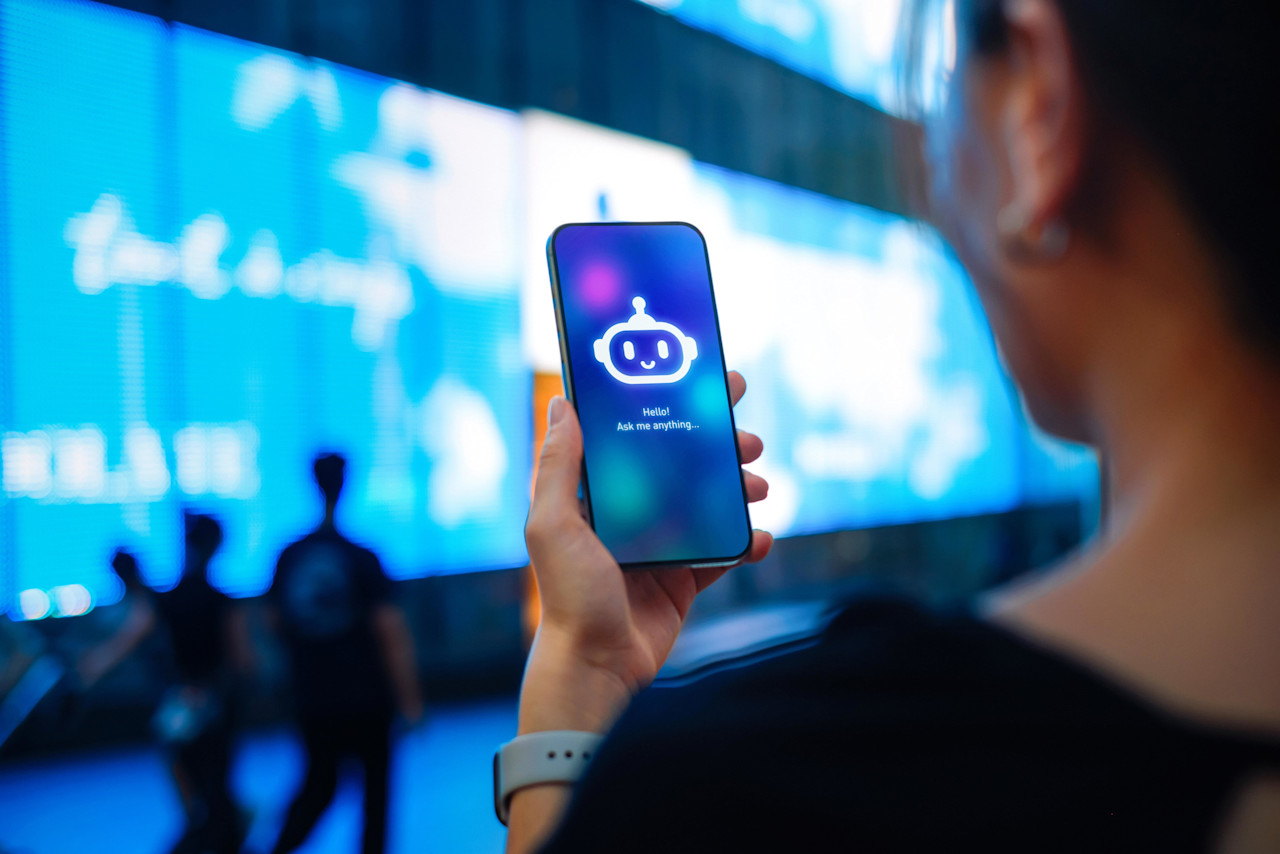

From food and fitness to AI and new drugs, positive trends are emerging in health
This year’s International Health Day motto, ‘Healthy beginnings, hopeful futures,’ aptly characterizes the current state of investing in the Healthy Living strategy. Despite a macro backdrop marked by heightened uncertainty, the Healthcare and Consumer Staples sectors are off to a ‘healthy’ start in 2025. More broadly, expanding fitness and nutrition trends, as well as the increasing use of AI to accelerate diagnosis and drug development, are creating a bright and hopeful future for the healthy living theme.
まとめ
- Prioritization of health and fitness creates opportunities for consumer brands
- From MedTech to drugs, AI has the potential to supercharge healthcare innovation
- The Healthy Living strategy offers attractive exposure to multi-year health trends
58% of physically active Gen Z and Millennials see fitness not just as a hobby, but as a priority and an integral part of their lifestyle. 1 For them, and many others, embracing an active lifestyle has become a defining personality trait and form of self-expression. That’s illustrated through the popularity of Instagram hashtags like “#pilateslovers” or “#runningman,” each with over five million related posts.
In addition, while fitness clubs have always been places where socializing mixes with activity, sports are now extending beyond the gym. Running clubs, community workouts, and yoga retreats are all gaining traction, each calling for specific performance gear and sportswear aesthetics. This not only creates fertile ground for brand marketing, but also opportunities for deeper consumer connections. Hyrox, a fast-growing sport that mixes running and strength, provides a good example of an activity which gained popularity through social media and led Puma to launch a dedicated athletic footwear.
Figure 1: For younger generations, fitness is more than a trend, it’s who they are

Fitness has become deeply ingrained in consumers’ daily lives.
Source: McKinsey, Sporting Goods Report Consumer Survey, December 2024.
That’s positive news for fitness brands, as consumer surveys show that over 80% of active individuals plan to maintain or increase their activity levels. Moreover, 30% of adults globally are still considered inactive. But what may seem like a negative indicator can also be seen as a significant opportunity. Converting that sedentary population represents a sizeable untapped market for sporting goods companies, equivalent to 1.8 billion people (or twice the number of adults in India). 2
Well-being is gaining muscle
The ‘active lifestyle’ ecosystem goes well beyond sporting goods. It also encompasses gyms, wearable devices, dietary and performance supplements, as well as better-for-you nutrition, all of which are experiencing solid levels of growth. Zooming in on nutrition, a growing number of consumers are selecting products for their health and performance benefits. Take functional hydration, for example. Once a category limited to sports drinks and unfashionable electrolyte tablets, it has become a trendy product thanks to investments in the space by large consumer packaged goods companies which cleverly identified an attractive niche.
Moreover, trends remain resilient even in the face of inflationary pressures. The health-conscious consumer continues to pay a premium for functional products, as demonstrated by the enduring double-digit growth in high-performance nutritional shakes. With such robust sales, multinational food & beverage companies are increasingly shifting their portfolio toward these high-growth segments, either organically or through M&A. For example, a high-single digit percentage of Coca-Cola’s sales in the US now flows from high-protein milk and shakes.3
Figure 2: Despite inflationary pressures, functional products are growing strongly

Source: Nielsen IQ, Euromonitor, Visible Alpha, BNP Paribas Exane estimates. January 2025.
Harnessing AI in health
Healthcare is constantly being revolutionized by new technologies, and AI is no different. For example, AI applied to medical imaging is helping cut the time needed for MRI and CT scans by up to half as higher-quality images are produced at faster rates. That reduces physician costs, increases patient satisfaction, and raises equipment utilization and operational efficiency.
However, the next leg of innovation lies in the ability to use AI to leverage patient medical data and large clinical datasets so clinicians can make better decisions. Clinical pathology, where tissue samples and other types of patient data are used to diagnose and treat disease, is a good example. According to the NHS, 70% of important medical decisions affecting patients’ lives involve laboratory tests and pathology services. 4 With computational pathology, AI models can provide more sensitive and timely determinations of medical conditions compared to human analysis.
In the case of cancer, findings from biomarker tests can then be leveraged to determine tumor type and create personalized treatment regimes for improved clinical outcomes in patients. AstraZeneca and Roche are notably co-developing such diagnostic tools. AI applications are expected to be a key driver of MedTech equipment upgrades. That means players with large installed bases of equipment in medical facilities and access to large amounts of data will have a competitive edge.
最新のインサイトを受け取る
投資に関する最新情報や専門家の分析を盛り込んだニュースレター(英文)を定期的にお届けします。
Hopeful developments
Innovation is the core engine of growth for the biopharma industry. AI is likely to supercharge drug discovery by processing massive amounts of biological data. As an example, DeepMind’s AlphaFold can already predict a protein’s 3D structure, a process that once took months to years in the lab. This enables quicker validation of the target, typically a protein believed to play a role in a disease, on which scientists can more efficiently concentrate R&D efforts.
Figure 3: The AI stimulant

Source: BofA Global Research, Nat Med. 2025 Jan;31(1)
AI can also be used to optimize clinical trial design, thus reducing the risk of R&D failure later in the drug development process. Novo Nordisk has highlighted how using AI capabilities to harmonize data from 1,600 clinical trials has led to better disease insights, patient stratification, and drug target identification.5
Turning to current biopharmaceutical pipelines, in 2024 and 2025, the US FDA approved innovative solutions against some of the most challenging diseases confronting society.6 These include new modalities to treat lung cancer as well as disease-modifying drugs against Alzheimer’s. In the obesity space, a new generation of drugs is undergoing clinical trials. Moreover, the race for oral alternatives to injectable GLP-1s is also in full swing.
Conclusion
Good health, like good medicine, begins with avoiding harm, which is why the healthy living strategy focuses on disease prevention via active lifestyles in addition to traditional healthcare segments. That means investing across the entire value chain of health, from companies focused on diagnostics, innovative drugs, and medical devices to those providing products that promote good nutrition and physical fitness – all known to reduce the risk of many chronic diseases.
With this comprehensive approach, the Healthy Living strategy should benefit from these multi-sector, multi-decade trends that are creating healthy beginnings and a brighter future – for both patients and portfolios.
Important note: The companies cited in this article are for illustrative purposes only to demonstrate the investment strategy on the date stated. The companies are not necessarily held by the strategy. Moreover, no inference can be made on the future development of the company.
Footnotes
1 McKinsey, March 2025. Sporting Goods 2025 – The new balancing act: Turning uncertainty into opportunity
2 Ibid.
3 Please also see Theme 3: “Healthcare – diverse trends and innovation signal positive prognosis”, found in Robeco’s 2025 Thematic Outlook, January 2025.
4 First Report of the UK House of Commons Select Committee on Health, May 2022, para 141.
5 Novo Nordisk, Capital Markets Day, March 2024.
6 US Food & Drug Administration’ Novel Drug Approvals for 2025.
重要事項
当資料は情報提供を目的として、Robeco Institutional Asset Management B.V.が作成した英文資料、もしくはその英文資料をロベコ・ジャパン株式会社が翻訳したものです。資料中の個別の金融商品の売買の勧誘や推奨等を目的とするものではありません。記載された情報は十分信頼できるものであると考えておりますが、その正確性、完全性を保証するものではありません。意見や見通しはあくまで作成日における弊社の判断に基づくものであり、今後予告なしに変更されることがあります。運用状況、市場動向、意見等は、過去の一時点あるいは過去の一定期間についてのものであり、過去の実績は将来の運用成果を保証または示唆するものではありません。また、記載された投資方針・戦略等は全ての投資家の皆様に適合するとは限りません。当資料は法律、税務、会計面での助言の提供を意図するものではありません。 ご契約に際しては、必要に応じ専門家にご相談の上、最終的なご判断はお客様ご自身でなさるようお願い致します。 運用を行う資産の評価額は、組入有価証券等の価格、金融市場の相場や金利等の変動、及び組入有価証券の発行体の財務状況による信用力等の影響を受けて変動します。また、外貨建資産に投資する場合は為替変動の影響も受けます。運用によって生じた損益は、全て投資家の皆様に帰属します。したがって投資元本や一定の運用成果が保証されているものではなく、投資元本を上回る損失を被ることがあります。弊社が行う金融商品取引業に係る手数料または報酬は、締結される契約の種類や契約資産額により異なるため、当資料において記載せず別途ご提示させて頂く場合があります。具体的な手数料または報酬の金額・計算方法につきましては弊社担当者へお問合せください。 当資料及び記載されている情報、商品に関する権利は弊社に帰属します。したがって、弊社の書面による同意なくしてその全部もしくは一部を複製またはその他の方法で配布することはご遠慮ください。 商号等: ロベコ・ジャパン株式会社 金融商品取引業者 関東財務局長(金商)第2780号 加入協会: 一般社団法人 日本投資顧問業協会




















